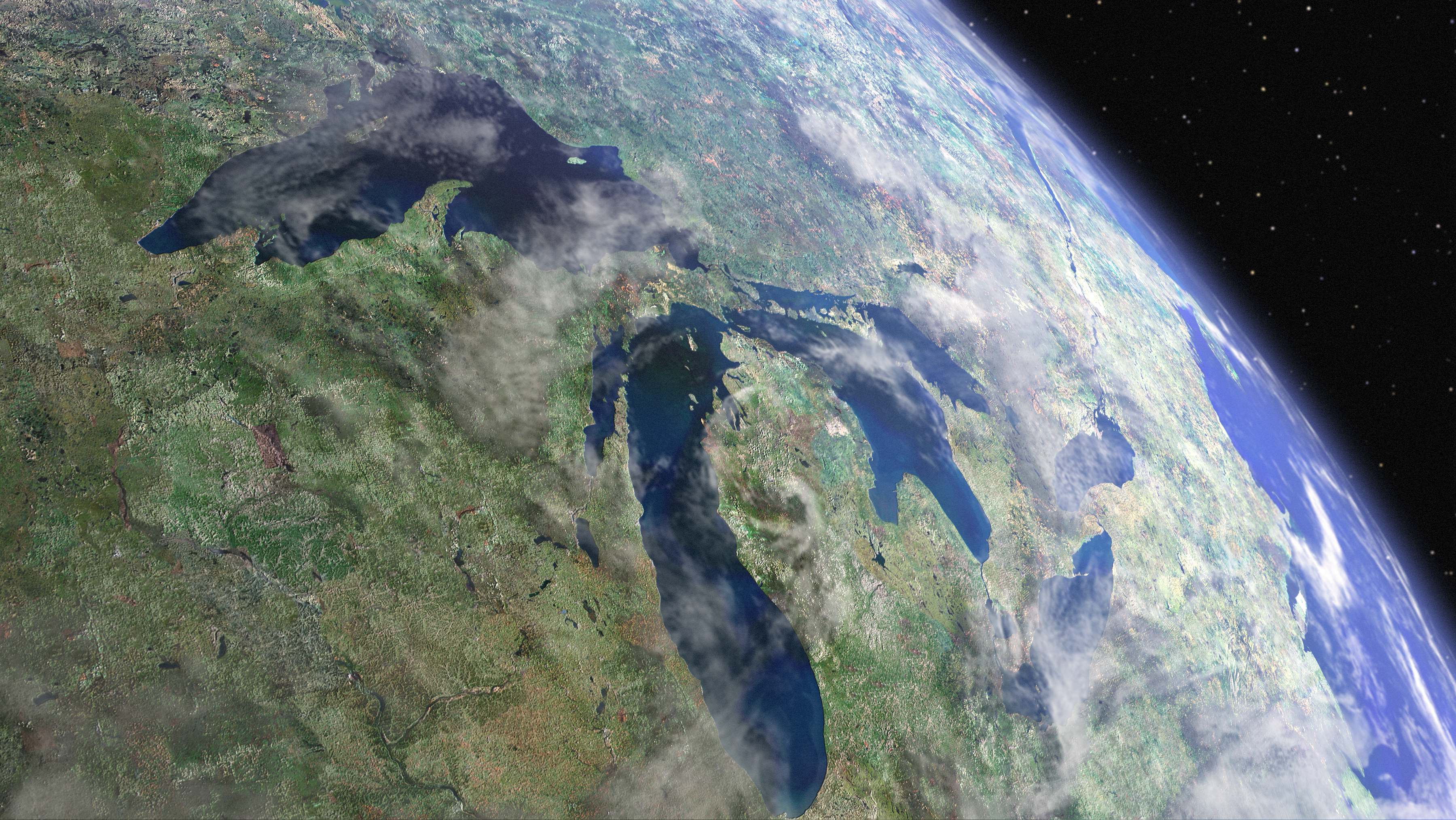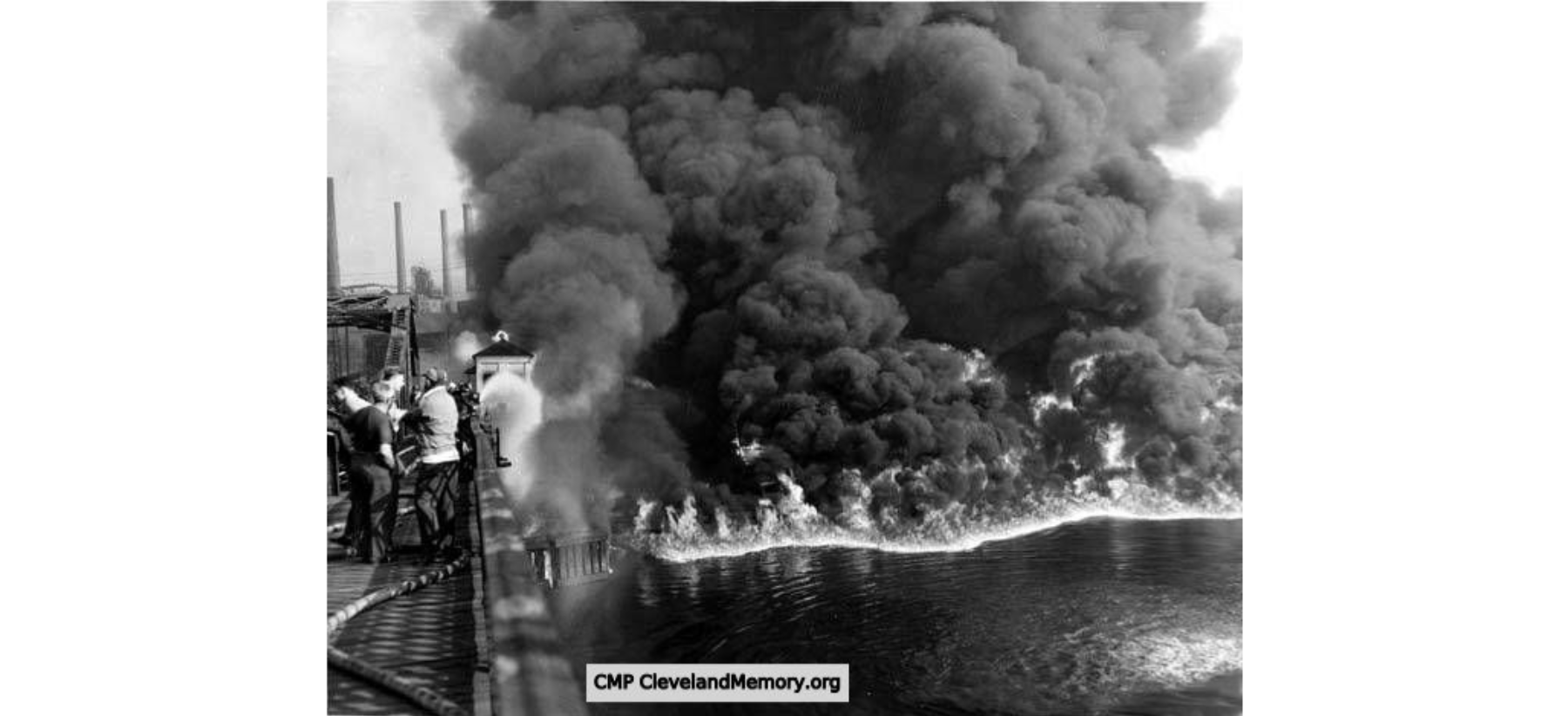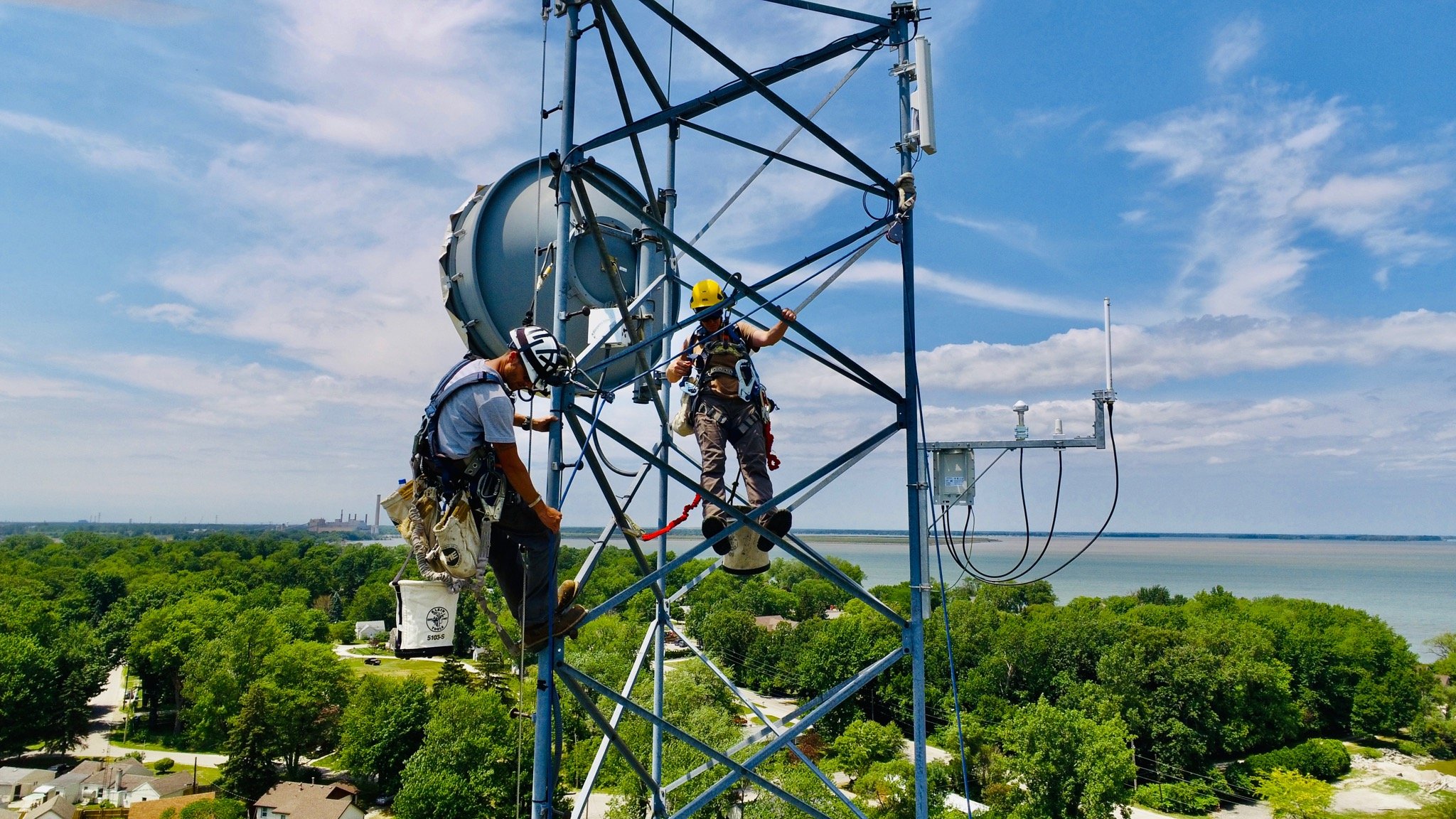50 years of U.S.-Canadian cooperation transforms Great Lakes, but much more work remains
By Justin Jacques
In the U.S., this month marks a half-century since the passage of the Clean Water Act (CWA), an historic set of investments and regulatory provisions that established a foundation for much of how the contemporary water sector operates. The CWA is not, however, the only environmental policy landmark celebrating its 50th anniversary this year — 2022 also marks five decades since the U.S. Environmental Protection Agency (EPA) and Environment and Climate Change Canada (ECCC) signed the Great Lakes Water Quality Agreement.
The agreement, which set the terms for a working relationship between the U.S. and Canada to restore and protect the world’s largest freshwater ecosystem, has enabled transformational improvements to Great Lakes water quality even as populations swelled, development surged, and new threats emerged. With the passage of the U.S. Bipartisan Infrastructure Law last November, which allocates USD $1 billion directly to Great Lakes cleanup via EPA’s Great Lakes Restoration Initiative (GLRI), the binational partnership’s momentum has perhaps never been greater.
“Over the past 50 years, the United States and Canada have made tremendous progress working together to protect the Great Lakes and support a thriving regional economy,” EPA Administrator Michael Regan said in a July statement about the anniversary. “Through our strong partnership with Canada and additional Great Lakes Restoration Initiative funding from the Bipartisan Infrastructure Law, we remain committed to safeguarding this shared treasure for present and future generations.”
Growing Pains
As the growth of Chicago, Milwaukee, Toronto, and other industrial centers in the Great Lakes region accelerated in the mid-19th century, in absence of standards on discharges, the amount of pollution entering the ecosystem gradually spiraled out of control. In Cleveland, a series of now-infamous photos from 1952 through 1969 show the Cuyahoga River — which feeds into Lake Erie — so saturated with oil and other flammable pollutants that it would routinely catch fire. These high-profile events propelled the growing Great Lakes pollution crisis into the national spotlight, prompting swift and decisive action, EPA Great Lakes National Program Office Director Chris Korleski told the Water Environment Federation (WEF; Alexandria, Virginia).
“It was abundantly clear in the late ’60s and the 1970s that the water quality of the Great Lakes — and in general, water quality throughout the United States — was an increasingly serious concern that could not be ignored anymore,” Korleski said. “The impairments had become so visible that there was a recognition that something had to be done.”
In April 1972, representatives from the newly formed EPA met with counterparts from Canada’s Department of the Environment in Ottawa, where they developed a non-binding set of long-term targets for Great Lakes health as well as specific metrics to gauge their progress. The Great Lakes Water Quality Agreement set guidelines for monitoring ecosystem welfare, responding to threats and emergencies, conducting research, and notifying the public, among other activities.
From Point to Non-Point
The partnership’s early focus was on addressing pollution from point sources, including factories, lake-going vessels, and water resource recovery facilities (WRRFs), described Korleski. The CWA provided EPA with new authority to regulate these sources, both by setting standards for effluent and by controlling pollutants before they reached discharge points.
One notable example is household detergents containing high concentrations of phosphorus, which Great Lakes Water Quality Agreement partners identified as a major source of nutrient pollution in the region. By the mid-1980s, all U.S. states and Canadian provinces bordering the Great Lakes had pioneered bans on phosphorus-based detergent, causing a significant decrease in the seasonal frequency of harmful algal bloom (HAB) formation. Alongside other measures, these piecemeal victories prompted a resurgence of biodiversity, aided lakeside economies, and reassured residents that water from the Great Lakes was safe for drinking and swimming.
“The difference between then and now with respect to the regulation of pollutants from point sources is night and day,” Korleski said. “We now have a modern environmental regulatory system, which closely regulates what can be discharged by point sources — such as factories — that didn’t exist back then.”
Today, Korleski describes that it is increasingly difficult to tie threats to a specific point of origin. For instance, while nutrient pollution has dramatically declined from WRRFs and industrial facilities since the 1970s, it has grown exponentially from agricultural runoff. Climate change has exacerbated this problem, causing HABs to appear with growing frequency in Lake Erie and other lakes surrounded by agriculturally intensive watersheds.
Likewise, while provincial, state, and federal regulations on lake-going vessels and the water they discharge have dramatically stemmed the establishment of non-native or invasive plants and animals, managing invasive species once they have propagated within the Great Lakes has proven extremely challenging.
“Once you’re trying to control established invasives — assuming you have a way of controlling them — that gets tremendously expensive and resource-intensive and is not a guarantee of success by any means,” Korleski said. “It’s almost like trench warfare.”
EPA Physical Scientist T. Kevin O’Donnell describes that approximately 190 invasive species are thought to have entered the Great Lakes since the mid-1800s, but that the influx of new invasives has significantly slowed within the last few decades in response to prevention efforts. As ballast water — water stored on ships to enhance stability and maneuverability — is thought to account for as much as 50% of Great Lakes invasives, he emphasized the importance of public outreach and communication regarding non-native species as well as making it as easy as possible for boaters to safely manage their ballast water.
“If the public is aware that something is invasive, that’s a really big first step to stop the expansion of these non-native species in the Great Lakes once they get in,” O’Donnell said.
Investing Where It’s Needed Most
Key to the partnership’s strategy for managing invasives and other decentralized threats involves identifying specific “areas of concern” as priorities for cleanup projects, Korleski explained. These include, for example, critical habitats for native species that show evidence of invasion by non-native species or areas near drinking water intakes that are especially prone to HABs. A 1987 meeting between the Great Lakes Water Quality Agreement partners identified 43 such areas of concern: 26 in the U.S.; 12 in Canada; and five shared areas within the jurisdiction of both nations.
Particularly in recent years, these areas of concern have been a centerpiece of work under the Great Lakes Water Quality Agreement. Typically requiring the removal of millions of pounds of contaminated sediment, managing invasive species, and controlling sources of nutrient pollution, delisting an area of concern is an expensive and complicated procedure that often takes years to complete, Korleski described. Between 1987 and 2010, only one area of concern within the U.S. jurisdiction was cleaned up and delisted. However, since 2010, six areas of concern have been delisted, with significant progress made toward delisting approximately 15 more sites in the near future. On the Canadian side, three areas of concern have been delisted with two more sites nearing full recovery.
Funding granted to the GLRI by the Bipartisan Infrastructure Law will focus narrowly on the remaining areas of concern. The legislation also bolsters financial backing for Drinking Water and Clean Water State Revolving Fund programs, which will enable Great Lakes states to implement projects that contribute to broader restoration goals.
“That billion dollars in Bipartisan Infrastructure Law money is a real accelerant,” Korleski said. “It’s giving us the fuel for our moonshot which is to try to delist all the areas of concern by the end of 2030. It’s our view that they’ve been around for way too long.”
Being Part of the Solution
EPA representatives emphasize that progress under the Great Lakes Water Quality Agreement results from far more partners than the governments of the U.S. and Canada — initiatives by nonprofit conservation groups, private companies, tribal governments, universities, and particularly WRRFs are an instrumental part of the restoration campaign.
Several water and wastewater utilities in the Great Lakes area perform well beyond their regulatory requirements, as well as operate their own public awareness campaigns and localized cleanup efforts. Stephen Jann, chief of EPA’s Water Permits Branch, praised Great Lakes utilities for working proactively to tackle issues like HABs, which tend to be inextricably tied to discharges from WRRFs.
“I want to acknowledge the tremendous investment made by communities, states, and Congress to improve wastewater collection and treatment infrastructure, both within the Great Lakes region and around the entire U.S,” Jann said. “I also want to acknowledge the skill and dedication of the professionals who design, construct, and operate the collection systems and treatment plants.”
Jann described that operating comprehensive water quality monitoring programs for the waters to which they discharge effluent is one of the most helpful ways Great Lakes wastewater utilities can contribute to the region’s restoration. Beyond that, he urged utilities to invest in green infrastructure to better control pollutants from stormwater runoff as well as in cybersecurity to keep the systems that control their operations safe from external manipulation.
In his time working on Great Lakes protection, Korleski described that utilities’ expertise, professionalism, and willingness to be part of the solution makes him hopeful for the future of the region.
“Nobody can say the battle is over and that we’ve won,” Korleski said. “The next generation, 25 years from now, will still be struggling with any number of issues in the Great Lakes. But I am very pleased just to see how far we’ve come in 50 years, in so many ways, and even acknowledging the very serious ongoing challenges that we still have, being an optimist, I think that we will find a way to meet those challenges.”
Learn more about the Great Lakes Water Quality Agreement at www.binational.net.

This year marks the 50th anniversary of the Great Lakes Water Quality Agreement, a unique partnership between the U.S. and Canada that coordinates Great Lakes protection and restoration efforts. Image courtesy of U.S. Environmental Protection Agency Office of Water

As the areas around the Great Lakes urbanized and industrialized, high-profile environmental disasters became increasingly common in absence of comprehensive water quality regulations. The Cuyahoga River, a tributary of Lake Erie running through Cleveland, Ohio, is known to have caught fire at least 10 times through 1969 due to its high concentration of flammable pollutants. These events were an early impetus for the Clean Water Act and the Great Lakes Water Quality Agreement. Image courtesy of Cleveland State University Library/Cleveland Memory

Crews supported by the Cleveland Water Alliance install a new, high-tech radio on a tower overlooking the Lake Erie Center at the University of Toledo (Ohio). Similar radios are being deployed strategically across Lake Erie to gather water quality data from remote sensors more easily. Image courtesy of David Ruck/Great Lakes Outreach Media

